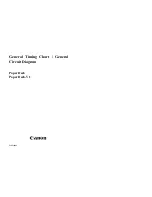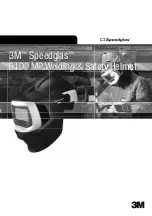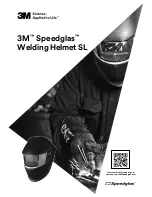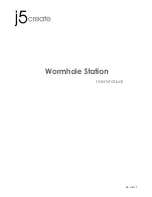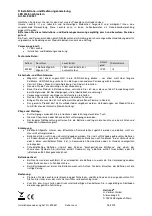
14
8011703/XF49/2019-09| SICK
O P E R A T I N G I N S T R U C T I O N S | VICOTEC320
Subject to change without notice
4
PROJECT PLANNING
4
Project planning
4.1
Assembly project planning
4.1.1
Arrangement along the tunnel section
The number and distribution of measuring points depends on the ventilation system used.
Single factors are:
●
Type of tunnel profile
●
Section route
●
Ventilation system design
●
Number and arrangement of fans
●
Regional regulations
Measuring point selection depends primarily on the following criteria:
●
A combination of VICOTEC320 with VICOTEC 410 or VISIC100SF is recommended for
optimum measuring results.
●
The recommended distance between visibility measurements depends on whether
these are also to be used for smoke detection:
– Without smoke detection:
≤
400 m
– With smoke detection:
≤
150 m
●
We recommend VISIC50SF for smoke detection.
●
An even spread along the tunnel length is recommended for semi and transverse
ventilation, with at least 2 measuring points per ventilation section.
●
NO/NO
2
can be measured every 400 – 1000 m. Position the measuring points
preferably at the tunnel exit in tunnels with one-way traffic.
●
Two-way traffic can still arise in tunnels with one-way traffic. It is therefore recommended
to install at least 3 measuring points for visibility in tunnels with lengthwise ventilation:
one each about 150 m from the entrance and at least one in the middle of the tunnel.
●
It is recommended to install additional fog sensors (e.g. VISIC620) near the tunnel
portals when there is a risk that fog can be sucked into the tunnel. Dust particles acting
as additional condensation crystals can strengthen the fog effect in the tunnel sections.
Fog moisture overlays visibility due to dust particles. Fog sensors serve to prevent fog
drifts being sucked into the tunnel. Alternately, visibility can be measured at the tunnel
portals using measuring devices (e.g. VISIC100SF or VICOTEC450) that heat the air
sucked in and therefore evaporate fog moisture.
●
When the tunnel roadway curves, ensure that the measuring beam between single
sensors is not interrupted by the tunnel wall, fixtures or vehicles passing each other (see
see “Arrangement with special prerequisites”, page 16
).
4.1.2
Arrangement in cross-section profile
Particle concentration distribution in a tunnel is generally very even across the profile
cross-section during traffic movement. Traffic flows and lengthwise flows through natural
ventilation and the piston effect of vehicle movement in separate tunnel sections for each
direction effect rapid swirling of the air in the tunnel. The turbulence behind vehicles
strengthens this effect.
The height is not critical due to excellent swirling. A fitting height between 2.8 and
4.5 meters is aimed at. The sensors contaminate faster when fitted lower and the
maintenance effort increases when the sensors are fitted higher.






























